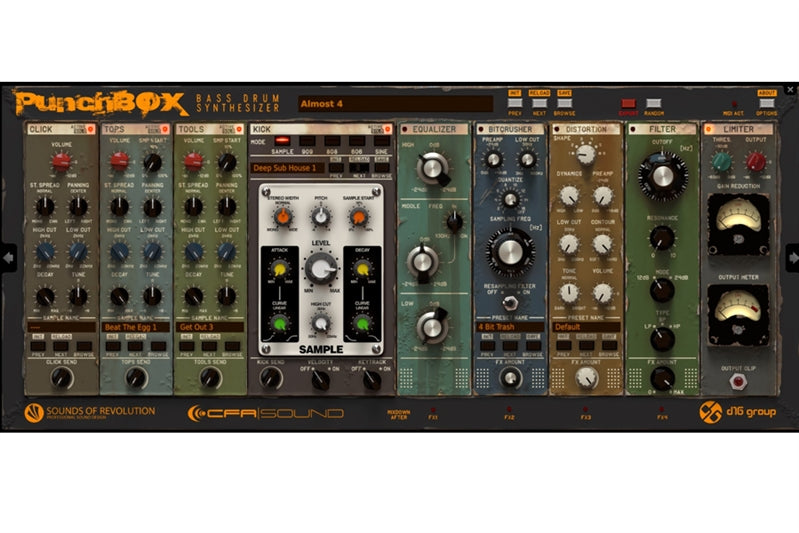

D16 have addressed the issue here with the introduction of Low, Normal, High and Ultra settings for both real-time and offline modes, allowing you to work with a lower CPU load and then switch up to the best quality for final mixdowns. One of the only major criticisms of version 1.0 was its hunger for processing power. I also like the way the v1.1 presets are filed in a new folder in the library, so it’s easy to see at glance which ones are new. The filtered sounds and distortion-based presets are particularly strong. To reflect the new options, version 1.1 introduces 116 new presets, crafted with the same attention to detail as the original preset library by Sebastian Bachliñski. The two modulation sources are still shared between all four delay lines, but for the sake of simplicity it’s probably a wise choice separate LFOs, envelopes and peak followers for all four would be much more complicated and the setup as it stands is flexible enough for most applications.

Overall, the modulation system is now incredibly versatile.

All three modulation sources can be retriggered either by MIDI or by transients of the incoming signal. The LFO section is also expanded with the introduction of a phase control and an invert button. The best delays have a sonic character all of their own – think of a Roland Space Echo or an 80s bucket brigade unitĮnvelope mode allows you to use a simple ADSHR envelope to modulate each delay line’s parameters, while peak mode is an envelope follower which traces the incoming signal level and generates a modulation signal to follow it.
#D16 sigmund freeze pro
The sonic range of Sigmund was already impressive in version 1.0, so what’s new in version 1.1? There’s now Pro Tools AAX support, there’s a tap tempo option for setting delay time, a new feedback hold button and a default parameter automation map, but the biggest changes are in the modulator section, where the two LFOs from version 1.0 can now also be switched to envelope or peak mode. Sigmund can do clean and clear echoes, of course, but it excels when you employ the resonant filters, add a little overdrive or begin to modulate parameters. Each channel can operate in stereo or mid/side mode, and features a multi-mode filter and overdrive circuit. Sigmund comprises four independent stereo delay lines, which can be combined using nine different routing options and then blended together using the in-built mixer. Now updated to version 1.1, Sigmund is part of the company’s impressive range of effect plugins, which also includes the popular Toraverb reverb and perennial Attack favourite Decimort.
#D16 sigmund freeze software
Sigmund, from Polish software developers D16, is a great example of what can be achieved when the delay unit is treated as a creative tool in its own right rather than just another digital-era utility. They form the basis of modulation effects such as choruses and flangers they can add rhythmic interest to a simple synth part or drum track the best have a sonic character all of their own – think of a Roland Space Echo or an 80s bucket brigade unit, contributing a distinctive colouration to the signal while adding ambience and groove. It’s a shame, because delays can be so much more than just an echo. Load up a tempo-synced setting, maybe adjust a filter and that’s about it. How many of us even manually adjust a delay time any more? Instead, the delay has become a boring utility plugin to a lot of producers. Now every DAW has a decent – if often characterless – delay built in, most of us have started taking delay effects for granted. There was a time when the average studio might only have one or two delay units available, and they were a valued part of the creative process. In a strange way, delay effects have been one of the victims of the digital audio revolution. Greg Scarth puts the latest version of D16’s versatile delay plugin to the test.


 0 kommentar(er)
0 kommentar(er)
